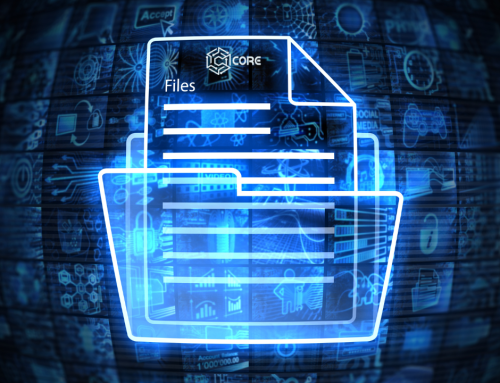What is Digital Transformation?
What is Digital Transformation? OK, so if you’re reading this article, we’re going to assume that your Organisation/Company/Charity in Sheffield or beyond have heard the term “Digital Transformation” and you are looking to find out more about it. Maybe you’ve even began to understand what it is and are looking to gain more information to help you to plan your journey to Digital Transformation. Either way, this article aims to help you to both plan AND implement your digital transformation journey.
This article is intended to give you a platform to build your own ideas of what constitutes digital transformation for YOUR organisation. There is no right and wrong order of doing things. Nor is there a right way to do things. One size definitely doesn’t fit all when it comes to Digital Transformation. Read on to find out more.
What is Digital Transformation?
Digital transformation is the adoption of technology solutions that replace existing manual, non-digital processes within your organisation. Digital transformation, at it’s heart, makes your business run much better, much more efficiently. It fundamentally changes the way that you operate and helps you to deliver more value to your customers or service users. When done correctly, Digital Transformation should, in the long run, save your business either Time OR Money OR both!

What is the first step on the digital transformation journey? Prioritisation.
The place to begin is planning. We would usually recommend that you begin by identifying the simplest things to digitise. These are usually paper-based forms or processes that exist in your business and can sometimes be the most meaningful. Things like expenses forms or holiday forms are really simple to digitise using many online systems (such as www.core-software.co.uk). Digitising these processes will gain an immediate benefit for the business. You should also look at your more manual processes – are people manually collecting data from one system and entering it into another for example? If so, these things can usually be automated.
You also need to think about how long it might take you to get from A-Z on your Digital Transformation Journey. Think about estimating the time needed – maybe it’s 6 months, a year or two years, but once you’ve started, at least you know you’ll get there eventually. Once you’ve planned the total amount of time required, instead of thinking about Z, try to think about B. What is the first, simple step that we can take that will start that journey?
Automation
In many businesses, part of the problem is that the right people don’t have access to the right information at the right time. Automation can take care of that, by ensuring that your data works in a much cleverer way. When a piece of data fits in with your previously defined criteria, the system will notify you that something needs to happen. As an example, think about the Service Contracts within your business – your Telecoms Contracts, Utility Contracts and IT Support Contracts. Historically, someone might need to remember that a contract was up for renewal (or if you’re lucky, it might be entered into a spreadsheet where you can check it, again, if you remember!). Once you have put the data for those service contracts into a digital system, it will send you a notification, by email, text, Microsoft Teams or other method, to tell you that the service contract is due for renewal. What could be easier?!
These simple automations can save you tens or hundreds of man hours searching out the information that you need. Simply putting the data in when you enter into a contract will result in the renewal never being missed.
As well as notifications, of course many other systems can be automated. Think about processes within your business such as Purchase Order & Invoice Matching. These items can take days per month of time, but could easily be automated in such a way that someone only needs to be made aware of the items that DON’T match, rather than searching manually through every single one.
Automation can go much further than this too. It can migrate data from one system to another for example or could assist with lead generation into your business. Take a manufacturing business as a real-world example. They might have a sales department and a service delivery department (usually the shop floor). The sales people utilise one system where they manage quotes and orders, the shop-floor use a different system that gives access to works orders and supply chain ordering requirements. Historically, the Sales Orders might get passed over to the shop-floor in the form of a paper-based job card or something similar. Once you bring automation into the mix, it can move the Sales Order seamlessly into the Shop Floor Works Order system (such as Sage 200 or SAP for example), ready for the team to begin their work.
Integration
In today’s world, businesses have multiple software systems providing different services to different areas of the business or organisation. This can cause major headaches because there are 101 places that you might need to look to find the right information that you need at a given moment. Integrations help these systems to work together. Many providers now offer integrations with other systems that have complimentary offerings, so that you can access one system and see information from both. Where that’s not possible, ‘middleware’ comes into play. Middleware allows you to have a system that sits in between all of your different systems acting like a traffic controller – pushing and pulling data from one system to the other depending on the need. Ideally, all the data is visible from the central middleware application, meaning that you can report on it really successfully.
The Cloud
When thinking about Digital Transformation, The Cloud definitely has to come into the conversation. Most software vendors (manufacturers) are building software in a Cloud-first fashion these days and so any software you are looking to implement should be properly cloud-based where possible.
Added to that, Software platforms such as Microsoft 365 and Google G-Suite host a plethora of business management tools (such as Outlook & Teams) for you to communicate with your team.
ERP systems are also moving to the cloud, although this seems to be at a slower pace.

Summary
In conclusion, there are many, many things to think about when considering Digital Transformation. But, if you plan it correctly, starting with the simplest things and building towards the more difficult, your journey will be a success. Expect it to take time – not only to create and change your processes, but also to get buy in from other members of your team and indeed to train them. Think about writing some of the plan into a visual roadmap that will help you to get that buy in, because it will be easier to understand.
Lastly, make sure that you choose a digital partner that is able to help you consider these things. ESP are able to assist with digital transformation planning including common cloud solutions such as Microsoft 365, but more importantly, our very flexible CORE software solution that solves many of the problems you will experience on your journey.
You can find out more about CORE by visiting other areas of our site. If you wanted to discuss the article in more detail, don’t hesitate to drop us a message via our Contact page, or call us on 03302020101.











